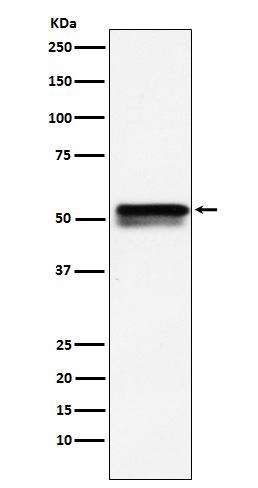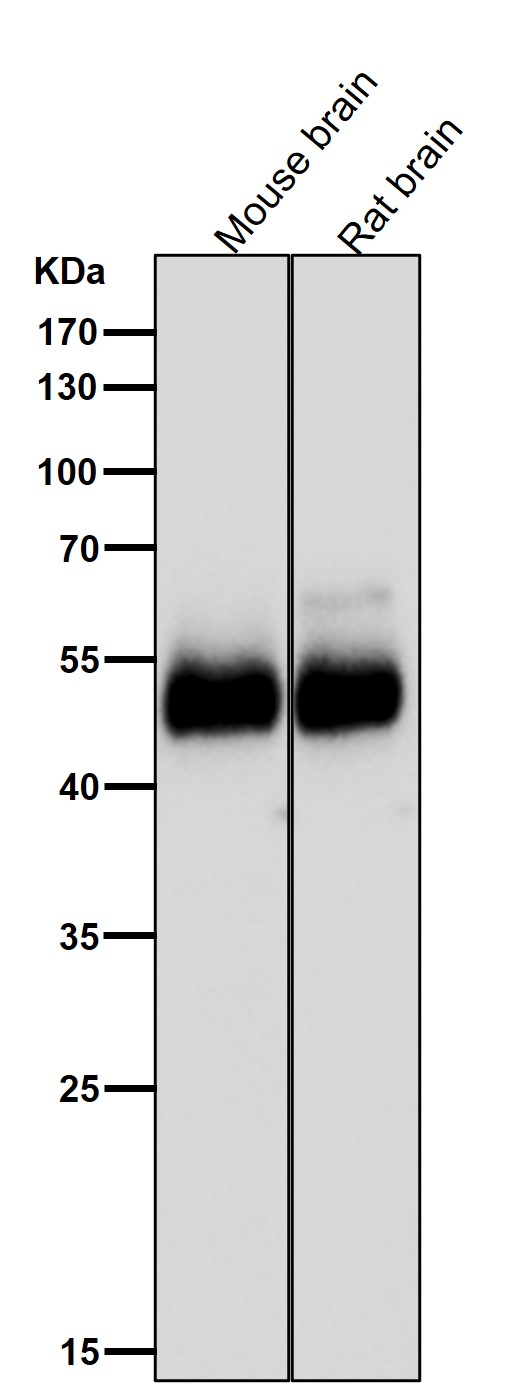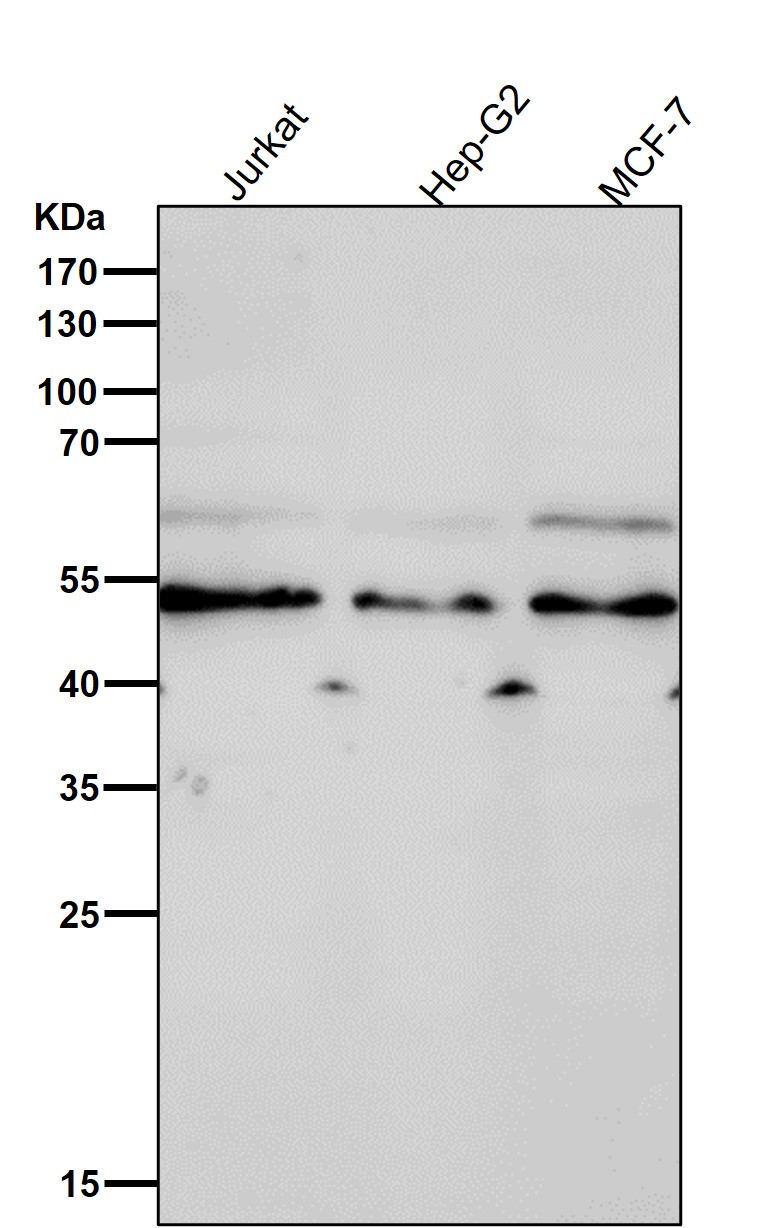


| WB | 1/1000-1/2000 | Human,Mouse,Rat |
| IF | 咨询技术 | Human,Mouse,Rat |
| IHC | 咨询技术 | Human,Mouse,Rat |
| ICC | 技术咨询 | Human,Mouse,Rat |
| FCM | 咨询技术 | Human,Mouse,Rat |
| Elisa | 咨询技术 | Human,Mouse,Rat |
| Aliases | AT591; CMT1D; CMT4E;; egr2; KROX20;;EGR 2 |
| WB Predicted band size | Calculated MW: 50 kDa ; Observed MW: 53 kDa |
| Host/Isotype | Rabbit IgG |
| Antibody Type | Primary antibody |
| Storage | Store at 4°C short term. Aliquot and store at -20°C long term. Avoid freeze/thaw cycles. |
| Species Reactivity | Human,Mouse,Rat |
| Immunogen | A synthesized peptide derived from human EGR 2 |
| Formulation | Purified antibody in PBS with 0.05% sodium azide,0.05% BSA and 50% glycerol. |
+ +
以下是关于EGR2抗体的3篇代表性文献摘要:
---
1. **文献名称**:*Krox20/EGR2 regulates Schwann cell myelination through direct transcriptional control of key genes*
**作者**:Topilko P, Schneider-Maunoury S, Levi G, et al.
**摘要**:该研究利用EGR2特异性抗体进行染色质免疫沉淀(ChIP)和免疫荧光实验,揭示了EGR2在施万细胞髓鞘形成中的核心作用,证明其通过直接调控MBP、PMP22等髓鞘相关基因的表达促进周围神经发育。
2. **文献名称**:*EGR2 mutations in inherited neuropathies: mechanisms and therapeutic implications*
**作者**:Svaren J, Moran JJ, Wu X, et al.
**摘要**:通过Western blot和免疫组化结合EGR2抗体,研究发现遗传性周围神经病变(CMT)患者中的EGR2突变导致蛋白质功能异常,并阐明了其与髓鞘发育缺陷的分子关联,为疾病机制提供了新见解。
3. **文献名称**:*Early growth response 2 (EGR2) expression in breast cancer progression*
**作者**:Warner JK, Jones LW, Scott KL.
**摘要**:该文献使用EGR2抗体检测乳腺癌组织中的蛋白表达水平,发现EGR2在转移性肿瘤中显著下调,提示其可能作为抑制上皮-间质转化(EMT)的肿瘤抑制因子,为癌症预后提供了潜在标志物。
---
这些研究均通过EGR2抗体的实验应用,揭示了该转录因子在不同生物学过程中的关键作用。
The EGR2 (Early Growth Response 2) antibody is a tool used to detect the EGR2 protein, a transcription factor belonging to the EGR family (EGR1-4) that regulates gene expression by binding to GC-rich DNA sequences. EGR2 plays critical roles in nervous system development, myelination, and immune regulation. It is particularly vital in Schwann cells, where it drives the expression of myelin-related genes during peripheral nerve maturation. Mutations in the EGR2 gene are linked to inherited neuropathies like Charcot-Marie-Tooth disease. In immunology, EGR2 is involved in T-cell tolerance and differentiation, influencing autoimmune and inflammatory responses.
Researchers use EGR2 antibodies in techniques such as Western blotting, immunohistochemistry, and immunofluorescence to study protein expression, localization, and function in various tissues. These antibodies are essential for investigating EGR2's role in developmental biology, neurodegeneration, and immune disorders. Specificity and reactivity (e.g., human, mouse, or rat samples) vary by antibody clone, requiring validation for experimental models. EGR2 antibodies thus serve as key reagents in both basic research and clinical studies aimed at understanding mechanisms of disease and potential therapeutic targets.
×